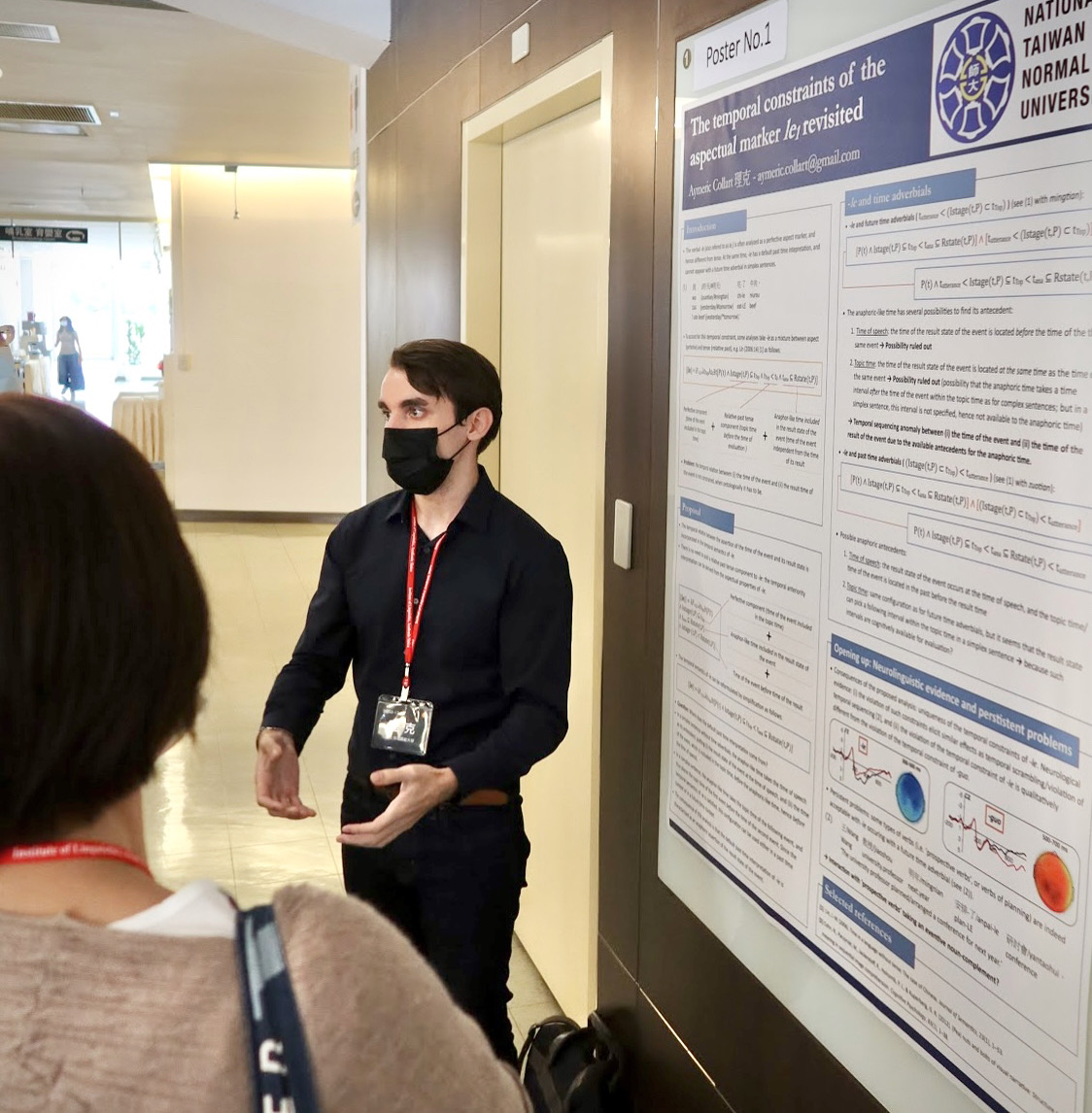Crosslinguistic language processing: Linguistic and cognitive diversities of the mind
Page under construction
Linguistic diversity is one of the most intriguing characteristics of the languages across the world. How this diversity is reflected in the language processing domain consists of one of my main research interests. I am currently actively this line of research to the topic of temporal reference processing.
Parts of my research focusing on this topic can be found below:
📓 Journal articles and book chapters
A) General considerations of cross-linguistic experimental research
This paper surveys the linguistic diversity in psycholinguistic and neurolinguistic research by examining the languages under investigation in major international conferences from 2012 to 2023. The results showed that these studies are highly skewed towards English in particular and Indo-European languages in general. However, the overall number of languages, as well as the number and proportion of Indo-European (other than English) and non-Indo-European languages increased over time, indicating that language processing research is becoming more and more diversified. This typological bias was also found in the inspection of specific linguistic phenomena: (a) morphosyntactic alignment, richness of case morphology, canonical word order, and (b) temporal concepts. The analyses of the typological bias at the general and specific levels indicate that there are gaps in various topics, and these can be filled by including more non-Indo-European languages in the investigation process. In addition, a sociolinguistic bias in language processing research emerges as the investigated languages are more often ‘Western’ languages with more than one million speakers and a shared written form. These results reflect the numerous challenges encountered when conducting experiments on less familiar languages, such as the geographic difficulty to find participants speaking these languages, the need of institutional support, as well as the difficulties in setting up collaborations with native speakers, among others.
This chapter discusses the contribution of Formosan languages to models of sentence processing by first reviewing past psycholinguistic and neurolinguistic experiments on Formosan languages and then demonstrating why such contributions are crucial to models of language processing. The challenges that can be encountered when conducting psycholinguistic and neurolinguistic experiments on Formosan languages are also discussed along with the insights that typologically different languages like Formosan languages can bring to such models as well as some topics in language processing.
B) Temporal reference processing in Sinitic languages: (Taiwan) Mandarin
The mechanisms underlying the processing of the temporal reference of a sentence are still unexplored. Most of the previous psycholinguistic studies used the temporal concord violation between deictic time adverbs and tense marking on the verb to investigate this issue. They found that processing past tense marking is more difficult than non-past tense, indicated by lower accuracy rates and/or longer reaction time. However, it is not clear whether this complexity is due to tense marking or the temporal reference it denotes. This paper examines this issue with a judgment acceptability experiment in Taiwan Mandarin, which is analyzed as a tenseless language. The two modal auxiliary verbs you and hui were placed after deictic past time adverbs (grammatical with you but not with hui) and deictic future time adverbs (grammatical with hui but not with you). The temporal concord violation of the auxiliary verb you led to higher acceptability rates but longer reaction time than hui, reflecting higher processing difficulties. This paper argues that these complexities are due to the existential-assertive meaning of you, which interplays with the meaning of the event described by the verb rendering the situation more or less likely to occur in the future. The computation of the temporal concord of hui, displaying a future sense meaning, is more straightforward and therefore easier to process. This suggests that the mechanisms responsible for temporal reference processing are of different nature depending on the semantics of the temporal marker in the sentence.
Reference to the time of an event can be encoded through various devices in language. While the neural processing of time reference in tense languages has been explored through tense inflection, relatively little is known about such processing through aspect in a tenseless language. The current study investigated how Mandarin speakers process perfective aspect markers -le and -guo, which are usually related to past time. Through the manipulation of the (dis)agreement between time adverbs and perfective markers, the results revealed that when co-occurring with a future/incongruent time adverb, compared with a past/congruent one, -le induced an early anterior negativity, while -guo triggered a P600. These distinct ERP patterns suggest that there is no unitary mechanism underlying perfectives in Mandarin, and that aspect modulates the relation of an event to time reference in a tenseless language, just like what tense inflection does in a tense language.
C) Temporal reference processing in Austronesian languages: Formosan languages
How the time reference of a sentence is processed based on the grammatical marking of the verb has already been explored in several languages with grammatical tense and aspect. It can also be grammatically expressed according to the reality status of the event (whether the event exists in time, realis mood, or not, irrealis). This study reports results from an acceptability judgment experiment in Paiwan, a Formosan language which exhibits a realis-perfective/irrealis distinction. By placing realis-perfective and irrealis markers after deictic past or future time adverbs and manipulating the grammaticality of the sentences, we asked which temporal concord violation (i.e., realis-perfective or irrealis) was harder to detect. The temporal concord violation of the realis-perfective marker induced greater processing difficulties (interactions between time reference and mood marking revealed lower accuracy rates and longer reaction time), but not the irrealis marker, in line with previous hypotheses. These processing difficulties may be partly due to the Paiwan realis mood marker which also encodes perfective aspect meaning. The reanalysis of the design of previous studies indicates that the interaction with perfective aspect also led to additional processing cost, suggesting that perfective aspect marking plays a crucial role in the processing of time reference.
🗣 Selected conference presentations
Neurotypological considerations of temporal concord processing. (Collart, 2023)